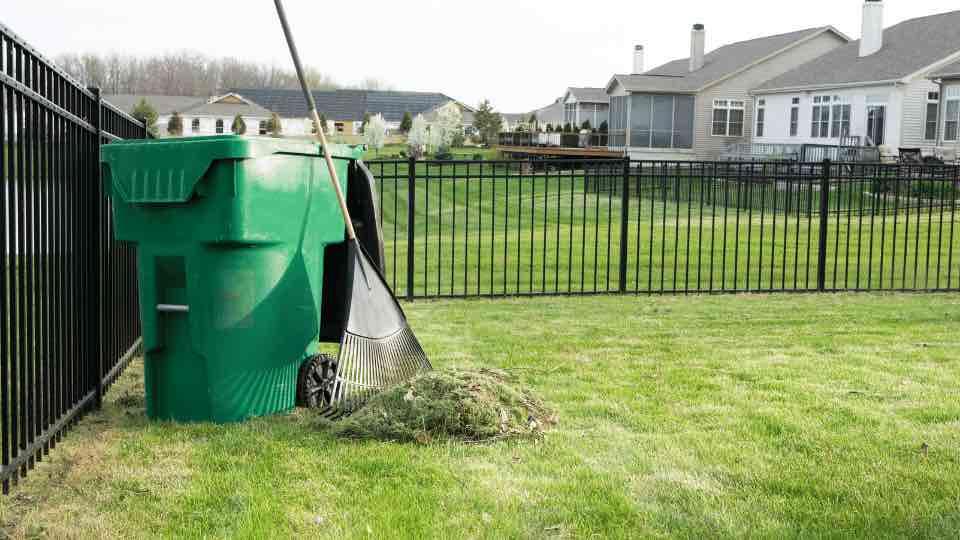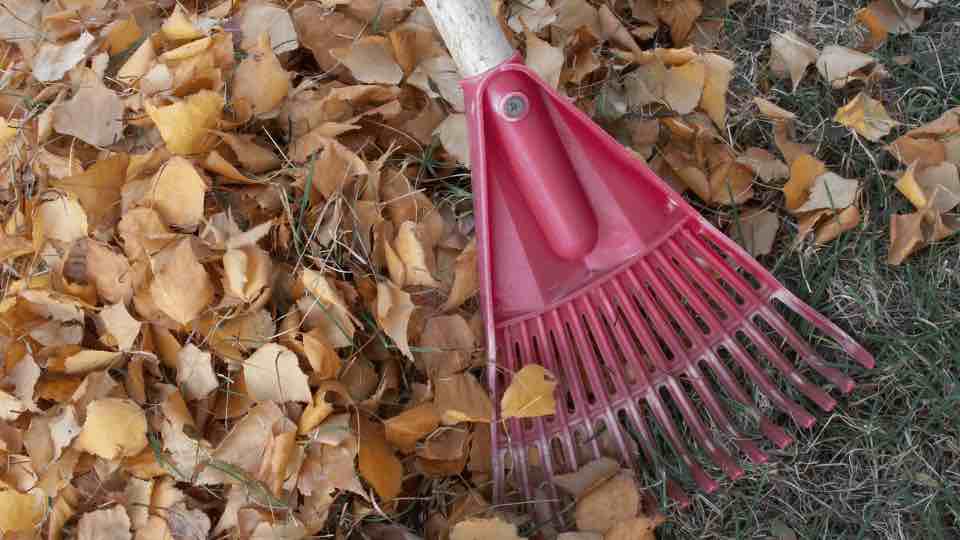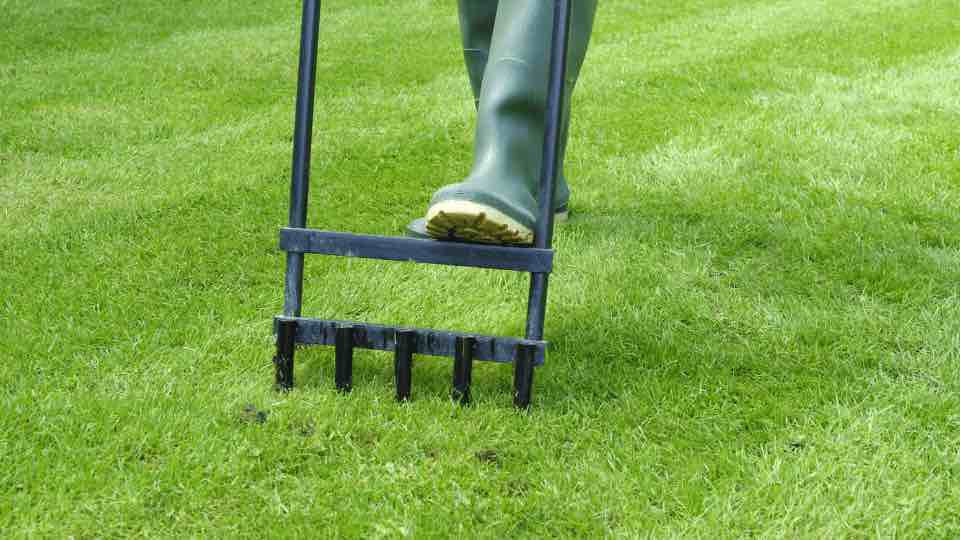Lawn Spring Clean-Up Done Right
Eric Johnson2023-09-25T01:37:42-05:00
In This Article:
Tips, Tricks and Hacks to Make Your Lawn & Yard Spring Clean-Up Easier
The Benefits of Lawn Care and Yard Cleanup in the Spring
The First Step of Spring Cleanup Is to Assess the Winter Damage
Clean Up Debris
Should I Dethatch My Lawn During Spring Cleanup?
Should I Aerate My Lawn During Spring Cleanup?
Prepare the Soil for Planting
Fertilize Your Yard
Prune Trees and Shrubs
Make Sure the Tires on Your Lawn & Garden Equipment Won’t Slow You Down
At Treadworld, We’ve Got the Replacement Tires For Your ATV and All Your Lawn Care Equipment!
Tips, Tricks and Hacks to Make Your Lawn & Yard Spring Clean-Up Easier
Once spring arrives, it’s time for you to start thinking about spring clean-up for your lawn and yard, and preparing for the growing season. This includes removing debris, pruning plants, and preparing the soil for planting, fertilizing and more. The tire experts at Treadworld are here to lay out reasonable steps to follow to complete a successful spring lawn cleanup, along with tips, tricks and hacks to make the job quicker and more efficient. You’ll also find info on all the essential tools and equipment you’ll need, whether you have a large or small yard. By following these steps, you can ensure a thorough spring clean-up of your lawn, which will set the stage for a healthy growing season.
The Benefits of Lawn Care and Yard Cleanup in the Spring
Some people love pulling out the rake, pruner, wheelbarrow, garden cart and other tools and equipment used for spring cleanup, and others do everything they can to avoid it, but the fact is, there are many yard care benefits to tackling this annual set of chores. For one thing, your lawn will be healthier. Spring lawn cleanup helps get rid of dead leaves, branches, and other debris that accumulated during winter, making it easier for new growth to emerge, while also allowing for better air circulation, which is an essential component for the health of your grass and plants. For another thing, your spring cleanup efforts can save you money down the road by eliminating issues that might grow over the season, leading to costly repair or replacement challenges. Additionally, spring yard cleanup can help control pests—like ticks, mice, and mosquitoes—by removing areas where they can nest and hide. Your spring clean out can also translate into making your yard a safer place for your family and visitors. Plus, as the season moves forward, your spring cleanup will make normal lawn maintenance like mowing and weeding easier. And finally, regular yard maintenance can provide curb appeal, and significantly enhance the appearance of your property. A well-maintained lawn and tidy yard can make a great first impression on visitors and potential buyers if you decide to sell your home.
The First Step of Spring Cleanup Is to Assess the Winter Damage
First, walk your property and assess the winter damage. Keep in mind that your lawn is not a single entity, but instead is made up of thousands of individual grass plants. Check out brown spots to determine whether your grass is dormant or dead. Dormant grass will come back, dead grass will not. There are two ways to tell the difference. With the tug test, just grab a handful of grass and tug lightly. If it comes right up with no resistance –no good, it’s probably dead. If it provides some resistance, then the roots and crown are still alive and will likely come back.
 One of the most important steps in a successful lawn spring clean-up is removing debris. Fallen leaves, twigs, branches and clumps of sod can smother your lawn, preventing it from getting the sunlight and nutrients needed for growth. Removing debris also helps prevent diseases and pests from taking hold in your yard. Rake leaves, twigs, and other debris from lawn. Remove dead foliage anywhere you find it. Clear out old mulch, gravel and stones you may have placed around your property.
One of the most important steps in a successful lawn spring clean-up is removing debris. Fallen leaves, twigs, branches and clumps of sod can smother your lawn, preventing it from getting the sunlight and nutrients needed for growth. Removing debris also helps prevent diseases and pests from taking hold in your yard. Rake leaves, twigs, and other debris from lawn. Remove dead foliage anywhere you find it. Clear out old mulch, gravel and stones you may have placed around your property.
Tips, tricks and hacks and equipment: Use a leaf blower to make short work of cleaning debris such as leaves, twigs, and small branches. Use a rake or thatch rake to remove leaves and other debris stuck in the grass. You may find that a mulching mower efficient for cleaning up lawn debris because it cuts the grass into small pieces and leaves them on the lawn to serve as a natural fertilizer. Using a tarp to collect debris can make easier transport to a disposal site. You can simply rake or blow the debris onto the tarp, and then drag the tarp to your compost pile or trash can. And consider composting the debris instead of sending it to the dump. Composting provides a natural way to recycle the leaves, grass clippings, and other yard waste that can be added to a compost pile to create nutrient-rich compost ideal for use in garden beds. Be sure to avoid composting any debris that may be diseased or infested with pests, as this can spread the problem to your garden. If in doubt, it’s best to dispose of the debris in the trash.
Should I Dethatch My Lawn During Spring Cleanup?
Thatch is a layer of dead grass, leaves, and other debris that accumulates between the soil and the green grass blades in your lawn. While some thatch is normal and healthy for your lawn, too much creates problems such as disease, pests, and poor water and nutrient absorption. The need for the dethatching lawn process every spring isn’t automatic. In fact, dethatching should only be done when the thatch layer exceeds at least ½-inch in thickness because dethatching too often or too aggressively can damage the grass roots and harm the overall health of your lawn. It’s also important to water your lawn thoroughly after dethatching to promote healthy regrowth. Signs it’s time to dethatch your lawn during spring cleanup include a lawn that feels spongy when you walk on it, patches of brown grass, and a visible thatch layer.
Tips, tricks and hacks and equipment: Depending on a size of your yard, you have several dethatching options beginning with a simple yard rake or a manual dethatcher for smaller yards. For larger yards, you may want to employ a power lawn dethatcher, a motorized tool that with spinning blades that can quickly remove the thatch layer from your lawn. For more severe thatch issues, you may want to use a vertical mower, a machine that cuts into the soil and removes thatch and other debris by using sharp blades or tines. Again, depending on the size of your yard, you may want to work in small sections make the process more manageable and allow you to focus on removing the thatch layer in one area before moving on to the next because dethatching your entire lawn at once can be overwhelming. Also, water the lawn before dethatching to make the thatch layer softer and easier to remove.
Should I Aerate My Lawn During Spring Cleanup?

After dethatching, you may want to aerate your lawn to promote better water and nutrient absorption. Lawn aeration creates tiny holes, or removes small soil plugs, alleviating soil compaction and allowing water, oxygen and nutrients to reach the grass roots more easily, helping them to dig deeper, and grow stronger and more resilient. Aerating, in conjunction with proper use of fertilizer and effective watering, can give you a thick, lush, plush lawn that will be the envy of the neighborhood.
Not every lawn will benefit from spring aeration because aeration holes can promote the germination of weed seeds. But, If your lawn has heavy foot traffic, clay soil, has not been aerated in the past two to three years, then aerating in the spring can be beneficial. Plus, spring is also a good time to aerate if you plan to overseed or fertilize your lawn, as it can help to ensure that the seeds and nutrients reach the roots of the grass.
Tips, tricks and hacks and equipment: You can use a manual lawn aerator, also known as a garden fork or aerating fork, a handheld tool with hollow tines that you push into the soil to create holes. Or, at the other end of the spectrum, you can use a faster, more efficient power aerator, a motorized machine that removes plugs of soil from the lawn using hollow tines. Before you aerate your yard, be sure to mark sprinkler heads and underground utilities to avoid damaging them with the aerator. Make multiple passes over the lawn in different directions to ensure that you have thoroughly aerated the soil, and overlap each pass by at least a few inches to ensure that you have covered the entire lawn and that there are no missed areas. If you are using a plug or core aerator, remove the soil plugs from the lawn after aerating to prevent them from being tracked into your house or causing a tripping hazard.
And finally, fertilize and water after aerating to promote healthy growth and to help the soil absorb the nutrients.
Healthy soil is the foundation of a healthy lawn because it provides the grass plants with the nutrients and water they need to grow. Whether or not you need to take steps to prepare the soil in your yard depends on its condition. If the soil is healthy and drains well, you may not need to do anything. However, if the soil is compacted, poorly draining, lacking in nutrients—or if you plan to plant new grass or plants—you may want to take steps to improve the soil by first testing it to determine its pH level, nutrient content, and organic matter content. You can purchase a soil test kit at your local garden center. This can help you to determine the type of soil amendments that you need to add to your soil to improve its structure and fertility.
Tips, tricks and hacks and equipment: Preparing the soil will in most cases require a shovel, a garden rake, a hoe, a wheelbarrow and perhaps a garden cart and possibly a tiller. If you perform a soil test, it can tell you whether you need to add soil amendments, such as compost, manure, peat moss, or lime, to improve the soil’s structure, pH level, and nutrient content, and to reduce soil erosion and weed growth. You can spread these evenly over your lawn or garden using a shovel or rake. This can help to provide the newly germinated seeds with the nutrients they need to grow strong and healthy. If you have bare spots where the soil needs to be worked more deeply, consider tilling the area with a hand tiller, a gas-powered tiller, an electric tiller or a garden tractor. Whatever actions you take, you may need to level the soil to ensure that it is smooth and even using a rake or a lawn roller. Then be sure to water thoroughly to help the soil absorb the amendments and promote healthy root growth.
Especially if you are planning to overseed your lawn, you may also want to consider applying a fertilizer to the soil. Fertilizing your lawn during spring cleanup can be an essential step to ensuring that your grass has the nutrients needed to thrive throughout the growing season. In general, it’s best to fertilize in early spring after the soil has warmed up and the grass and plants are beginning to grow again. There are many different types of fertilizers available, each with its own benefits and drawbacks. Some of the most common types include: organic fertilizers made from natural sources, such as compost, manure, and bone meal that are generally slower to release nutrients, but are better for the long-term health of your soil; synthetic fertilizers made from chemical compounds designed to release nutrients quickly, which are generally less expensive than organic fertilizers, but can be harsh on the environment if overused; slow-release fertilizers, which release nutrients gradually over a longer period of time to reduce the risk of over-fertilizing; and liquid fertilizers, which are mixed with water and applied using a garden hose or sprayer, and which are generally faster-acting than other types of fertilizers, but can be more expensive.
Tips, tricks and hacks and equipment: A fertilizer spreader is essential for evenly distributing fertilizer across your lawn or garden. There are two main types of fertilizer spreaders: broadcast spreaders and drop spreaders. Broadcast spreaders are better for larger areas, while drop spreaders are better for smaller, more precise applications. If you are using a liquid fertilizer, you will need a garden hose or sprayer to apply it to your lawn or garden. Apply fertilizer evenly. Walk at a steady pace and make sure the spreader is set to the correct setting for your lawn. Be sure to overlap each pass slightly to ensure even coverage. After applying fertilizer, water your lawn to help the nutrients penetrate the soil. Watering will also prevent the fertilizer from burning the grass blades. Water deeply and infrequently, rather than shallowly and frequently.
Pruning trees and shrubs during spring cleanup can provide several advantages, including encouraging healthy growth by removing dead, damaged and diseased branches; controlling the size and shape to make trees and shrubs more aesthetically pleasing; improving air circulation and sunlight penetration, which can help to prevent diseases and promote healthy growth; and redirecting the plant’s energy to the remaining branches, resulting in more fruit or flower production.
Tips, tricks and hacks and equipment: You’ll need a good pair of sharpened pruning shears or loppers. When pruning larger trees and shrubs, start with the largest branches first. This will make it easier to see what you’re doing and avoid damaging smaller branches. It’s important to remove dead and diseased branches to prevent the spread of disease to other parts of the tree or shrub. To make cleanup easier, spread a tarp or sheet under the tree or shrub to collect the branches and debris as you prune.
Make Sure the Tires on Your Lawn & Garden Equipment Won’t Slow You Down
Maintaining your lawn and garden tires is essential for ensuring the efficiency of your equipment, and your safety. Plus, quality tires can also help extend the life of your equipment—saving you time and money in the long run—because tires that are in poor shape will often add stress to other parts of the equipment leading to breakdown. So, before you start spring cleanup, take the time to check the tires on your mulching lawn mower and vertical lawn mower, power lawn dethatcher, power aerator, fertilizer spreader, wheelbarrow, garden cart, gas-powered tiller, lawn tractor, and all your other tools and equipment you’ll be using.
At Treadworld, We’ve Got the Replacement Tires For All Your Lawn Care Equipment!
You can count on us here at Treadworld to provide you with the dependable, high performance RubberMaster Lawn Care Tires you want. All of our tires—and all our wheel and tire packages—offer the finest in top quality, long-lasting, never-let-you-down reliability, manufactured with strict tolerances from top rubber compounds, triple-tested for quality before being X-rayed to be sure they’re perfect, then covered by our Ultimate Advantage Lifetime Warranty. Don’t hesitate to contact our tire experts via live chat or email with any questions or for help finding the perfect lawn and garden tires—or the perfect ATV tires, UTV tires, trailer tires, and many others—from our extensive selection. Or use our Treadworld Product Selector Tool to help you find exactly what you want, on our home page.
